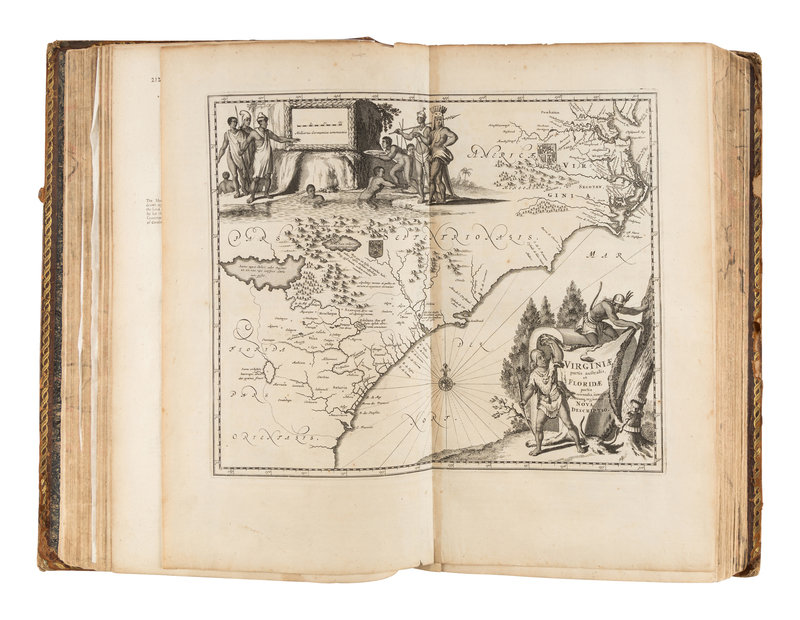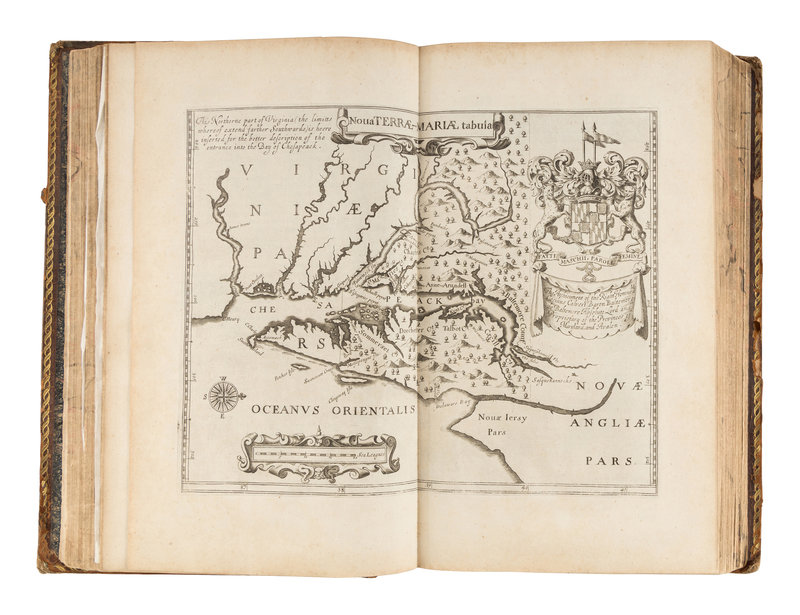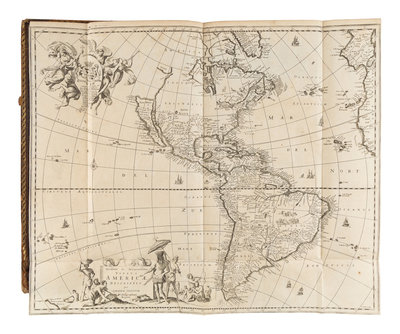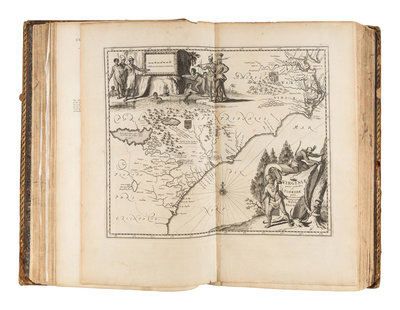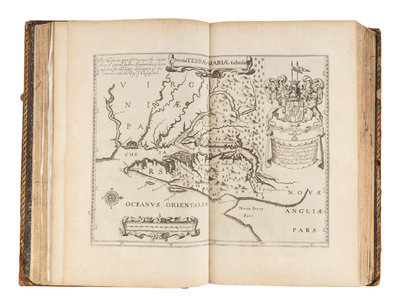Folio (408 x 255 mm). Engraved allegorical title, letterpress title printed in red and black. 56 engraved plates comprising: 6 portraits, 20 engraved double-page maps and 30 double-page views; 66 engraved illustrations in text; woodcut initials, head- and tail-pieces. (Without the "Arx Carolina" view [see below], title-page and allegorical title with repaired tears crossing letters and bound in on stubs, a few maps with separations to folds or short tears, some browning and a few light stains, some offsetting from in-text engravings.) Contemporary calf gilt, spine gilt, morocco lettering-pieces gilt (old rebacking, hinges starting, some wear).
FIRST EDITION IN ENGLISH, second issue, without the "Arx Carolina" plate, and with the Lords Proprietor's map and a map of Barbados. In place of the "Arx Carolina" plate (depicting the castle on the French settlement at present Paris Island) is Moxon's map of Carolina, A New Discription of Carolina By Order of the Lords Proprietors (known as "The First Lords Proprietors Map"). The map was based on a manuscript map by philosopher John Locke, and is the first large-format map of the newly-settled Carolina colony. Also in the present copy is a copy of the Virginia pars Australis map found in copies of the first issue.
Ogilby's text is, in part, a translation of Montanus's De Nieuwe en Onbekende Weereld, with numerous additions about New England, New France, Maryland and Virginia from more reliable sources. He includes a short section, “New Netherland, now call’d New York,” which recounts the transfer of sovereignty from the Netherlands to England in 1664. Most of the plates were reprinted from the original Dutch atlas plates. One notable exception is the map of Maryland, Nova Terrae-Mariae tabula, also known as the "Lord Baltimore Map," likely based on John Smith's 1612 map of Virginia, which was first published in London in 1635 to accompany the fourth tract of the founding of Maryland by Cecil Calvert, the second Lord Baltimore. Ogilby's version is a close derivative of that map, differentiated by the placement of a coat-of-arms on the right.
Alden & Landis 671/207; Borba de Moraes II:626; JCB (3) III:227-8; Palau 177493; Sabin 50089; Stokes Manhattan VI:262; Wing O-165. A WIDE-MARGINED COPY.

